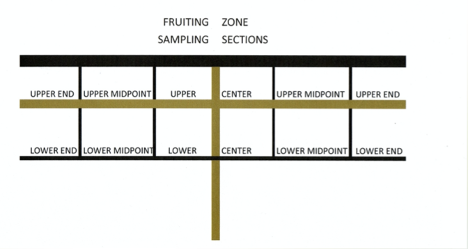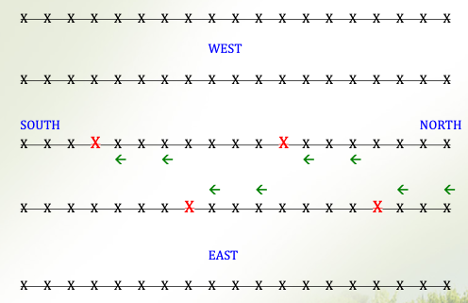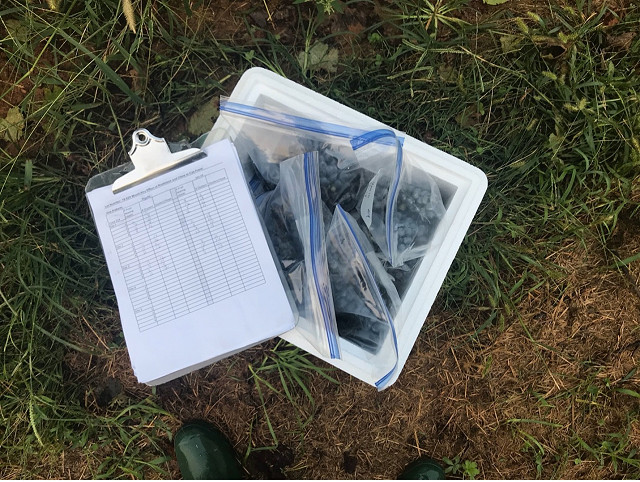
Figure 1: from UC Davis Wine Production VID 252, UC Davis Extension, n.d.
Vineyards are variable places. No matter how well you sample the vineyard, you will still likely have some deviation from the actual value. However, paying attention to the most common areas of variation can help align the sample value with the real value. Differences in heat, light, and soil moisture are known to be important drivers of grape maturity (1) and are important factors when thinking about your grape sampling regime. Variations in these can occur on three main levels:
- Between vine variation: Many important factors differ from one vineyard row to the next (or one side of the row to the other). If you have large differences in soil, water availability, exposure, crop load, or vine age within the vineyard block, make sure your sample represents this diversity or break the block into more homogenous portions for sampling. Sampling both sides of multiple rows helps account for these variations, and a sampling unit should not exceed 2.5 acres (2).
- Within vine variation: Clusters on the same vine can experience differences in heat and light, as well as different allocation of vine resources. When sampling, be intentional about sampling from each of the different fruiting zones (Figure 2) from clusters in the back and front of the vine.
- Within cluster differences: Berries within a cluster can experiences differences in light and heat as well as differences due to berry size and disease. Wolpert and Howell (1984)(3) found Brix levels underripe Vidal berries could span from 13-19° Brix in the same cluster, though this difference diminished with maturity.
Practically, how do you obtain a sample that is representative of all the grapes in the vineyard? It is best to follow a prescribed method and follow it every time.

Figure 2: from: UC Davis WIne Production VID 252, UC Davis Extension, n.d.
- Sample at the same time of day, preferably in the morning as long as the fruit is not wet.
- Decide before you begin which rows you will sample to ensure you cover the span of the vineyard. Divide your target number of berries (ex: 200) by the number of rows so you know how many berries you need per row. Don’t sample the edge rows as these are not representative. Try to take samples from at least 10-20% of the rows in the vineyard.
- As you walk the rows, alternate sides so that you take samples from both sides of the canopy.
- Walk a specific number of steps between samples and be consistent so you represent each portion of the row. After you sample the first row, check the number of berries you have to determine if you need to increase or decrease your steps to obtain you target number of berries in your predetermined number of rows.
- Alternate taking berries from upper and lower clusters; this is especially important in Ballerina trained systems where bottom clusters are less exposed. Also alternate sampling from the center, midpoint and end of the cane.
- Alternate taking samples from top, middle, and bottom, front and back of the cluster.
- Sample regularly (once per week initially, then more often as ripening progresses) to determine the trajectory of ripening.
- While you are walking the rows, observe the overall appearance of the vines. Are they looking healthy or starting to shut down? What diseases or other pests are apparent? Write these observations down as soon as you finish sampling.
- If you are cluster sampling, you don’t have to worry about which part of the cluster you are sampling from, but you have fewer opportunities to make sure you have represented the whole vineyard, so it is even more important that you spread out samples from different rows, both sides of the row, and different exposures within the canopy (top and bottom, front and back).
Sampling bias can also be a factor in the accuracy of a grape sample. As humans, we tend toward a bias of picking grapes that are most apparent, and most ripe. To avoid this, Zoecklein (2002)(2) recommends locating the fruit zone, the sampling without looking at the clusters.
References
(1) Zoecklein, B. W. Grape Sampling and Maturity Evaluation for Growers https://www.apps.fst.vt.edu/extension/enology/VC/Jan-Feb01.html (accessed Oct 30, 2019).
(2) Zoecklein, B. W. # 53 Grape Sampling, Asynchronous Berry Development, 2002 Vintage. Enology Notes, 2002.
(3) Wolpert, J. A.; Howell, G. S. Sampling Vidal Blanc Grapes. II. Sampling for Precise Estimates of Soluble Solids and Titratable Acidity of Juice. American Journal of Enology and Viticulture 1984, 35 (4), 242–246.




